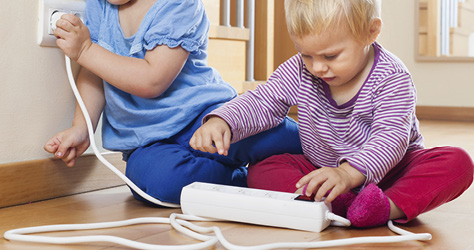Whilst your pre-schooler is beginning to understand about dangers, they will still need supervision.
As safety-proofing the home hopefully becomes easier, it’s time to think about the great outdoors.
At a glance
- Taking reasonable precautions at home
- Making your garden safe
- Travel safety with your little one

By now there should be fewer surprises when it comes to safety-proofing your home. The falls should be less frequent and your child will be able to understand what they should and shouldn’t play with. Although that doesn’t necessarily mean you can rely on them to remember and follow safety advice when unsupervised.
Down at the bottom of the garden
Exploring is a normal part of play and development and curiosity can get the better of them. For this reason it’s a good idea to continue to keep anything locked away that you don’t want in little hands. This includes not only cleaning products, toiletries, sharp implements and matches or lighters in the house, but also locking garden tools or chemicals in a shed or box outside.
Bouncing babies
Trampolines are increasingly popular and great for the development of coordination and balance. If you get a trampoline, always supervise children whilst they are on it. If it is a large trampoline, invest in one with safety netting to ensure that children can’t bounce off and fall. If it is a small indoor trampoline, make sure that it is sturdy, secured and will not topple over.
Road Safety
This is also a good time to begin teaching them about road safety. Make sure that gardens are secure so that they cannot run out onto a road or wander off. Also invest in a helmet for them to wear whilst riding a bike or scooter. Children don’t understand why roads are dangerous and whilst the old ‘stop, look and listen’ is still useful, it only works if they understand why they are stopping, what they are looking and listening for. Explain why they need to hold your hand and talk to them about safe and unsafe places to cross the road. Whilst they won’t be crossing roads by themselves for a while, it’s good to start talking to them about safe strategies whilst out and about.
Boosters
At around 15 to 36kgs, children can move into booster car seats. Booster seats allow an adult seat belt to properly protect children who would otherwise be too small for it to fit correctly. Ensure that the seat belt fits your child whilst in their booster seat by checking that the bottom part goes across their hips and the top diagonal part rests on their shoulder rather than across their neck.